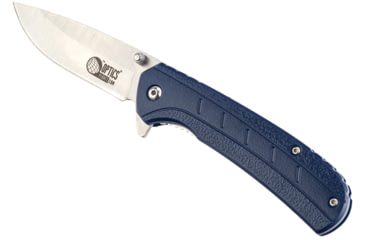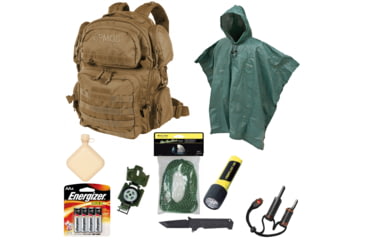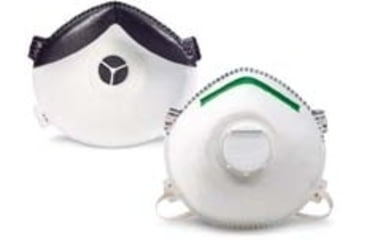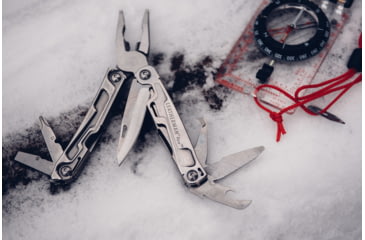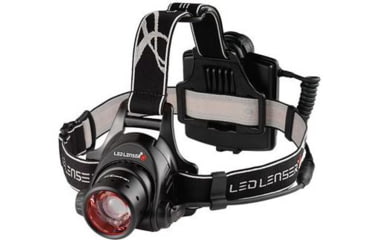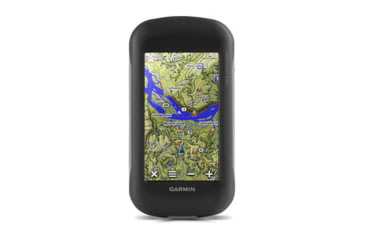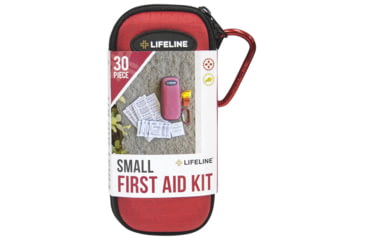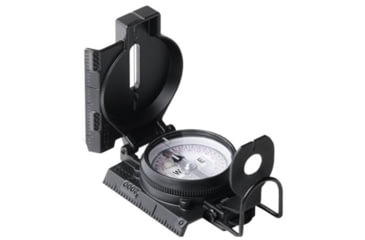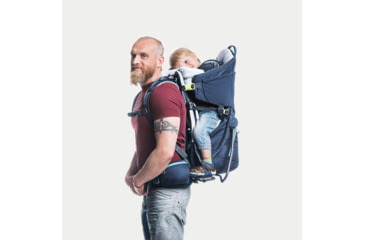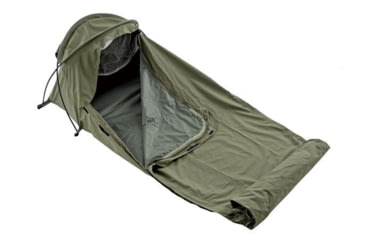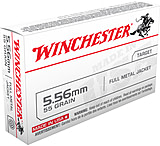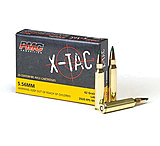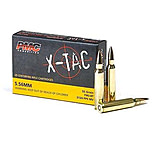A great many books, blogs, and articles have covered the bug-out bag. Many focus on some apocalyptic scenario where only the savvy survive and go on to fight marauding hordes, knee-deep in the ashes of civilization. That's a cool story, but it isn't grounded in more realistic concerns. Most don't take into account far more practical considerations like a family bug-out bag, localized natural disasters, and anticipating a bug-out evacuation to somewhere as mundane as the local community emergency shelter. If your emergency bag is put together properly, it'll get you started down the road as doomsday dawns, too. If you want the basic principles of a bug-out bag list that isn't geared toward the end of the world as we know it*, read on!![]()
*If you're really interested in stuff that will help you in the event of TEOTWAWKI (The End Of The World As We Know It), this will help you a lot, too.
What is a Bug-Out Bag?
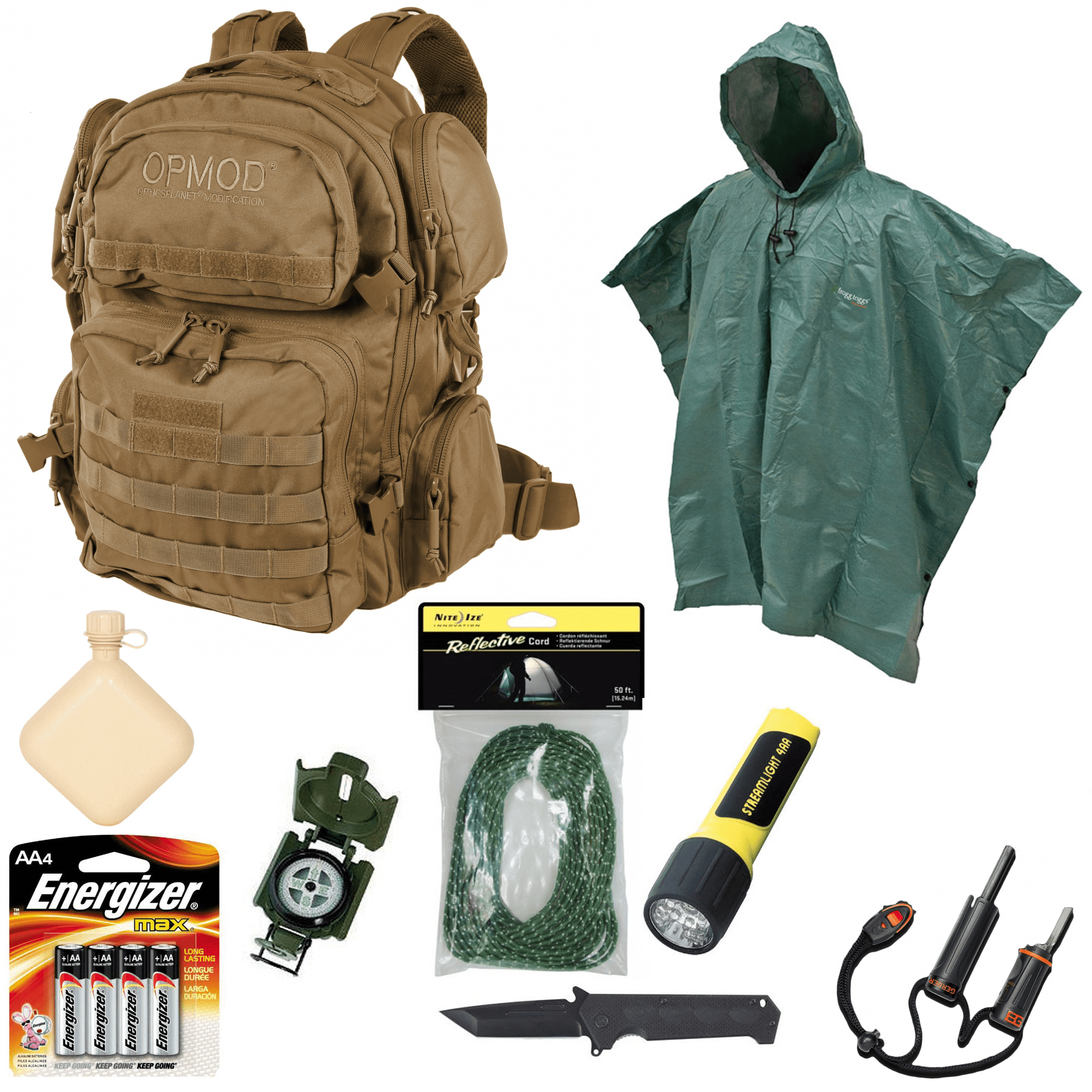 People who frequently travel for work will often have a small piece of luggage that's ready to go at a moment's notice that contains their personal necessities. If you've ever seen flight attendants come off of a plane, you've probably noticed that they each have something to this effect. My father was a railroader for 32 years, and railroaders commonly call their go-bags a "grip" because they're typically duffle bags with handles as opposed to backpack straps. No matter the profession, these kits are geared toward comfort more than basic survival. They usually have a spare set of clothes, toothbrushes, various other hygiene products, and something for entertainment like a book. Those who work outdoors tend to add elements of a bug-out kit out of necessity and prior experiences where they wish they'd had those things.
People who frequently travel for work will often have a small piece of luggage that's ready to go at a moment's notice that contains their personal necessities. If you've ever seen flight attendants come off of a plane, you've probably noticed that they each have something to this effect. My father was a railroader for 32 years, and railroaders commonly call their go-bags a "grip" because they're typically duffle bags with handles as opposed to backpack straps. No matter the profession, these kits are geared toward comfort more than basic survival. They usually have a spare set of clothes, toothbrushes, various other hygiene products, and something for entertainment like a book. Those who work outdoors tend to add elements of a bug-out kit out of necessity and prior experiences where they wish they'd had those things.
A bug-out bag (or "B.O.B") is a survival bag that's prepared in advance of any incident that requires someone to evacuate quickly in the event of an emergency, containing essentials for an unexpected and extended time away from home. They go by a lot of different names, and it's helpful to be familiar with some of them:
- 72-Hour Kit/Bag
- Emergency Kit/Bag
- Go Bag
- SHTF ("Stuff" Hits The Fan) Bag
There are a few others to be aware of that are somewhat different from a 72-hour bug-out bag:
- EDC (EveryDay Carry) Bag - This is a small kit of basic essentials that you might need as situations arise but isn't enough to serve as a bug-out kit unless it's all you have. As the name suggests, it's with you whenever you're not home. This can be in a purse, satchel, messenger bag, sling pack, daypack, etc. Many people distribute various elements of the kit into their pockets, belts, and keychains. Multi-tools, a lighter, a whistle, pepper spray, and similar items would fall into EDC.
- Car Kit - This is a survival kit that typically stays with the vehicle and includes specific tools and repair components. These should not be relied upon for a bug-out scenario on their own, as vehicle travel may be impossible due to traffic congestion, a breakdown, or separation from your car.
- Get Home Bag - This is a bag kept in the workplace, vehicle, etc. that is enough to get you home. It has more elements than an EDC Bag, but not as many as a full bug-out pack.
- GOOD (Get Out Of Dodge) Bag - This is a survival go-bag that's specifically designed to leave an urban area to travel to a safer city or to strike out into the wilderness.
- INCH (I'm Never Coming Home) Bag - This could easily be considered the most in-depth survival bug-out bag. It is assembled to be a long-term bug-out bag kit that will meet all of your needs as you travel away from the epicenter of the disastrous event with no plan of ever returning.
All of these types have the same foundation of bug-out bag essentials, tailored to your needs and the level of preparation that you desire or require. For this article, I'll be covering the basics for a kit that will get you through 72 hours but will still have enough gear to keep you going beyond that timeline (there is no fixed set of time that an emergency may last). Bug-out supplies will vary from person to person, and there are no absolutes for the exact equipment or brands that are needed for the best bug-out bags. If you opt for a pre-packed and ready-made bug-out bag, be prepared to add, remove, and modify different components to ensure it's tailored to you. It's really better to build your own emergency survival kit rather than relying on a one-size-fits-all that a stranger came up with. No two bug-out bags will be exactly alike since different people will prefer or prioritize certain pieces over others. Instead, it's better to think of them as components of a system for a survival situation.
What to Put in a Bug-Out Bag
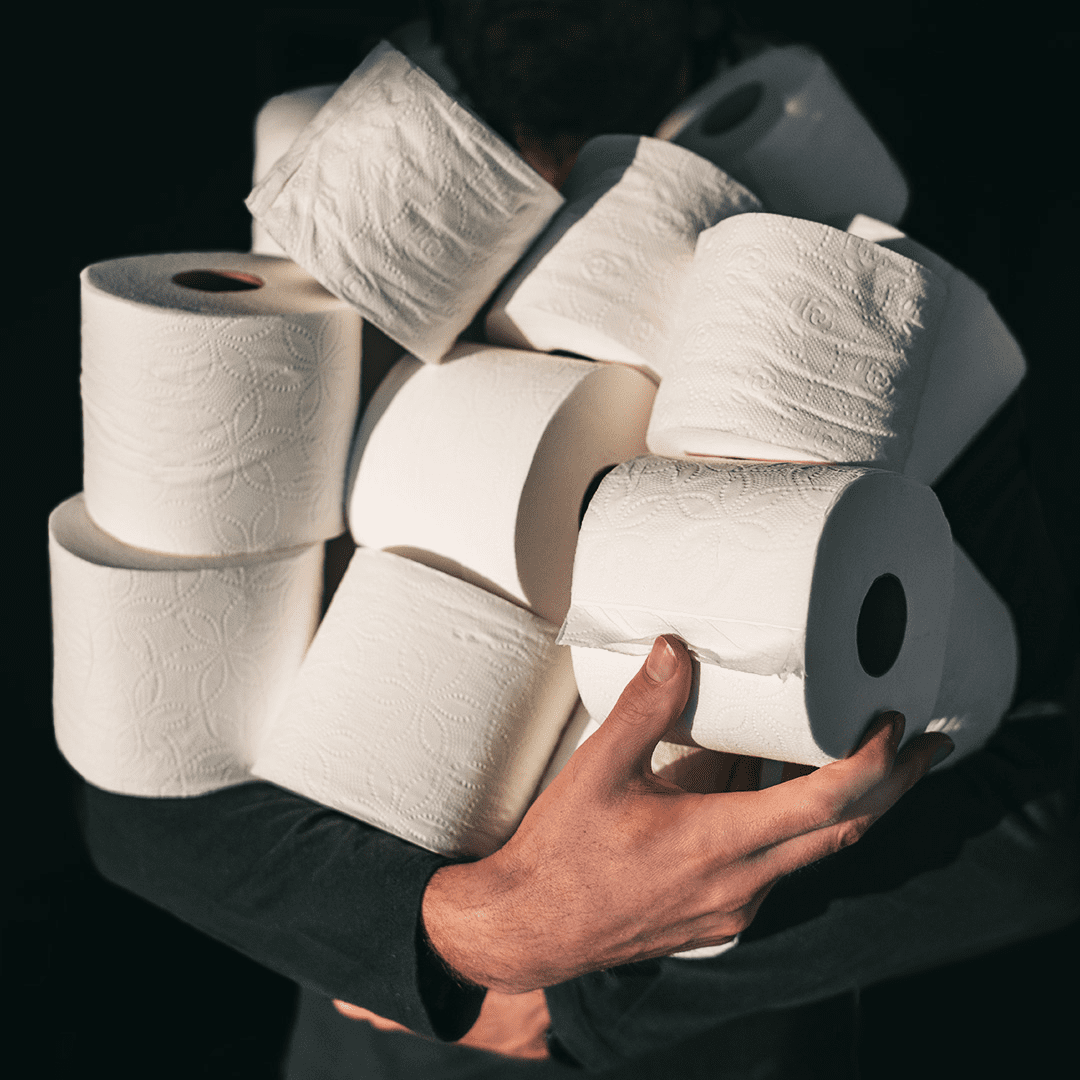 To keep your priorities straight, start by thinking about the "Rule of 3's" for human survival. Although not scientific or exact for every person, the "Rule of 3's" serves well as a rule of thumb in any life-threatening situation. It states that you can survive:
To keep your priorities straight, start by thinking about the "Rule of 3's" for human survival. Although not scientific or exact for every person, the "Rule of 3's" serves well as a rule of thumb in any life-threatening situation. It states that you can survive:
- 3 Minutes Without Air - We're not just talking about holding your breath underwater here. Yes, that might come into play, but it's far more likely that you'll encounter poor air quality. With the coronavirus pandemic, we've all become quite used to wearing masks of all sorts. However, when it comes to air quality, a cloth or simple medical mask is not going to protect your lungs. You'll want at least an N95 mask or respirator in the event of heavy smoke, a big concern for those of us who live in wildfire areas. If you live in an industrial area where spills, explosions, or other toxic contaminants are a danger, you'd do well to research a higher-grade gas mask.
- 3 Hours Without Shelter - "Shelter" includes appropriate clothing, so as long as you've checked that box, you're generally okay while you're moving. Where this really comes into play is in extreme environments. In blistering heat, shade becomes shelter. In wet conditions, shelter keeps you dry or provides a space to dry out in. In freezing conditions, shelter helps you preserve precious body heat. The natural elements really can kill you in three hours or less, so this isn't something to push through or ignore.
- 3 Days Without Water - You'll be in rough shape if you go three days without water, but it is survivable. This window is much narrower in hot, arid climates or when you're exerting a lot of energy and sweating. If you're bugging out, you're going to exert more energy than usual. That's why water is third on the list; it's the next thing that can kill you.
- 3 Weeks Without Food - Again, you're going to be in rough shape if you go this long without eating. In this context, it's helpful to keep in mind in case you're tempted to pack a Thanksgiving dinner's worth of food. Instead of planning to starve for weeks or lug around a bunch of heavy food, just be prepared with the bare minimum and realize that you're going to be on rations.
Notice that toilet paper is not on the list of things you can't survive without. If we learned one thing from the pandemic panic-buying in 2020, it's that a lot of folks seem to prioritize toilet paper above all else in an emergency situation.
The "10 Essentials of Outdoor Activity" translate very nicely to an emergency go-bag checklist. Ensure you have each of the following elements, and you're well on your way to having a solid foundation of go-bag contents.
Bug-Out Bag Checklist
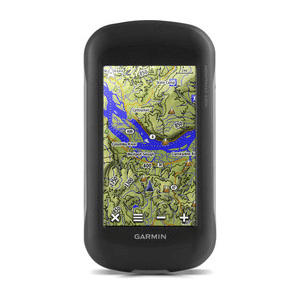
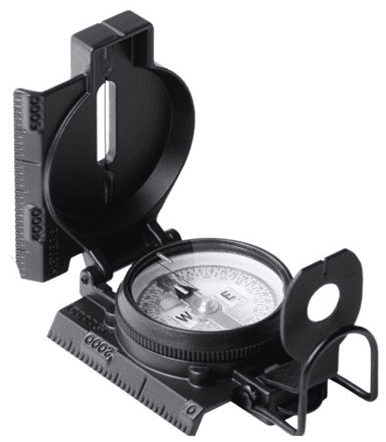 Navigation - A GPS, map and compass, or even cellphone map apps fall under this category. It's wise not to put all of your faith into electronic devices and keep a backup paper map just in case. This can be a simple printout from an online satellite view of your surrounding area or one with all routes of escape highlighted and marked out.
Navigation - A GPS, map and compass, or even cellphone map apps fall under this category. It's wise not to put all of your faith into electronic devices and keep a backup paper map just in case. This can be a simple printout from an online satellite view of your surrounding area or one with all routes of escape highlighted and marked out.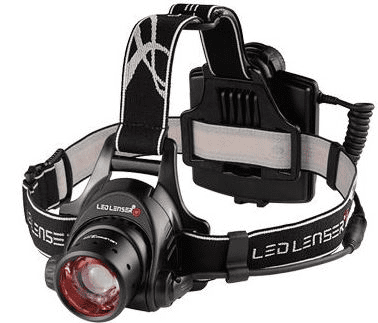 Illumination - Headlamps are preferred for bug-out bags because they're hands-free and compact. Bring two or three sets of extra batteries so that you don't have to worry about conserving power during your initial evacuation. If you can, find a headlamp that has a red LED to preserve night vision, a regular white LED, and a strobe function. The strobe is an excellent signaling device that can lead others to you.
Illumination - Headlamps are preferred for bug-out bags because they're hands-free and compact. Bring two or three sets of extra batteries so that you don't have to worry about conserving power during your initial evacuation. If you can, find a headlamp that has a red LED to preserve night vision, a regular white LED, and a strobe function. The strobe is an excellent signaling device that can lead others to you.- Protection - This is a broad category that covers things like sunscreen and insect repellant, sensible clothing, and the like. It also takes threats to your personal safety into account. Although you definitely can use your knife or other hand-to-hand combat weapons to defend yourself, it's less optimal to be in such close proximity to an enemy which leaves you vulnerable to injury. A lot of people prefer a firearm, particularly a handgun, for bug-out situations. Just be sure to continually practice and keep your gun skills sharp. Due to legalities or comfort levels, some people opt for self-defense spray instead. No matter what your defense tool is, make sure that you know how and when to use it, and keep it close at hand at all times. It does you no good buried in your pack.
- First Aid - A small, simple first aid kit will do. Keep it within your level of skill and training. If you're a first responder, you already know what you need in your kit and realize that your first aid kit is going to be more complex and bulky. If you're not trained to use it, there's absolutely no need to carry any additional first aid equipment.
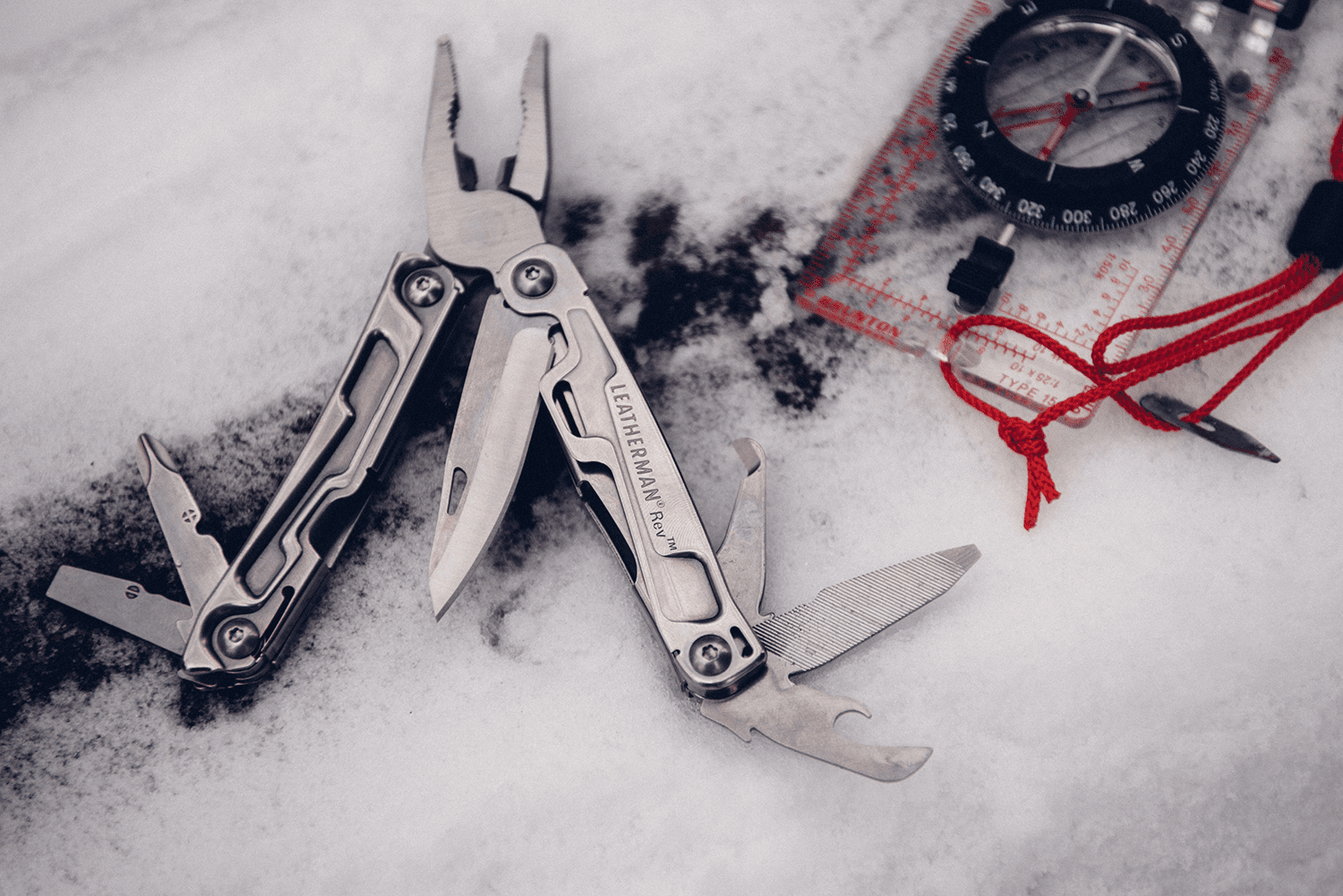
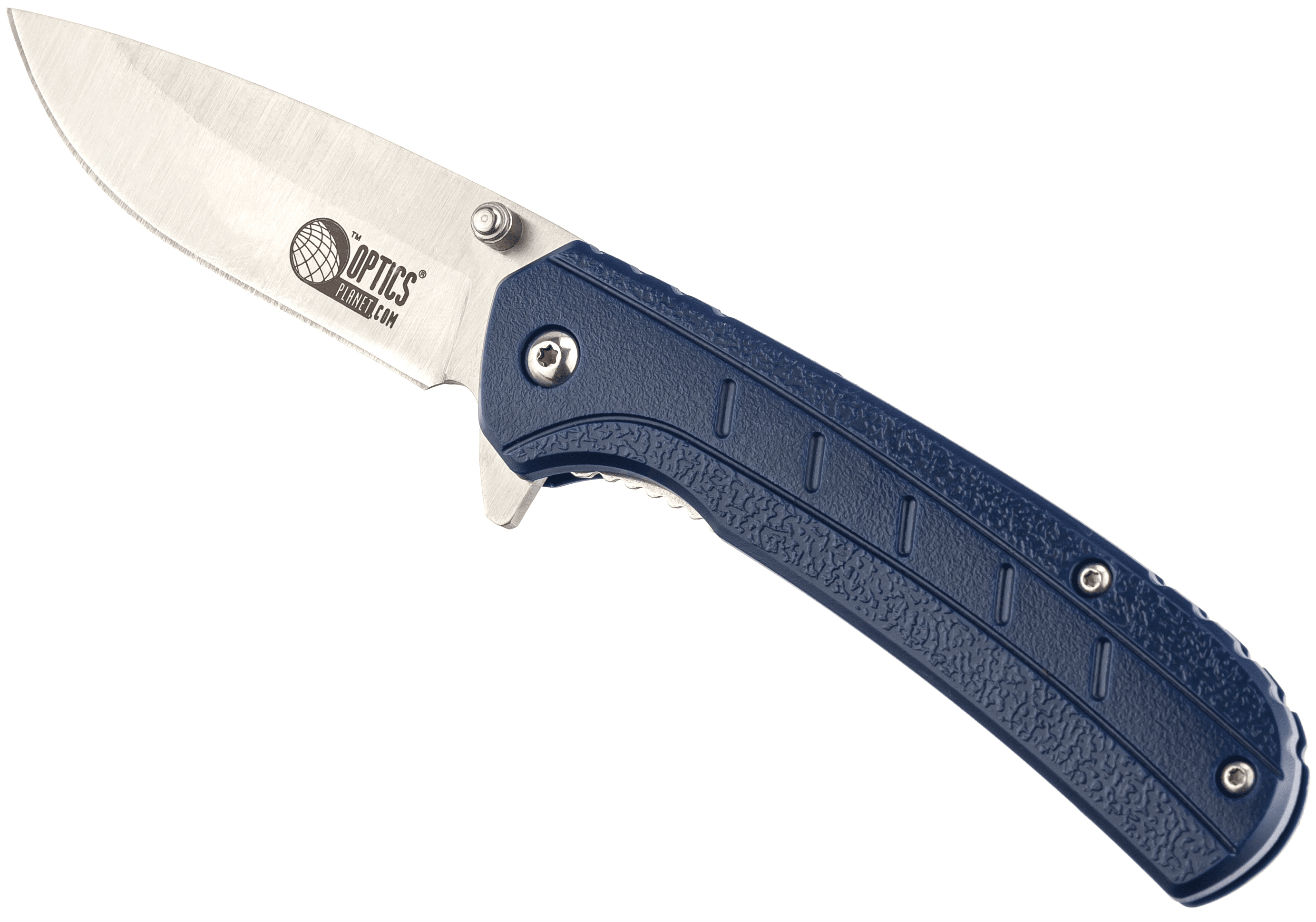 Knife/Tools - A knife is a must in any survival kit. Don't skimp; get yourself a quality knife that you can trust your life with. A multi-tool should also be in your kit and kept easily accessible. Even though most have at least one knife blade, it's still best practice to have a larger knife for bigger jobs.
Knife/Tools - A knife is a must in any survival kit. Don't skimp; get yourself a quality knife that you can trust your life with. A multi-tool should also be in your kit and kept easily accessible. Even though most have at least one knife blade, it's still best practice to have a larger knife for bigger jobs.- Fire - Fire serves so many purposes like heat, cooking, comfort, and signaling that it's a must-have in any survival kit. Keep at least two ways to start a fire in your kit. A simple lighter will do for one, but for the other, make sure you have a firestarter that can stand up to the elements or doesn't require additional fuel.
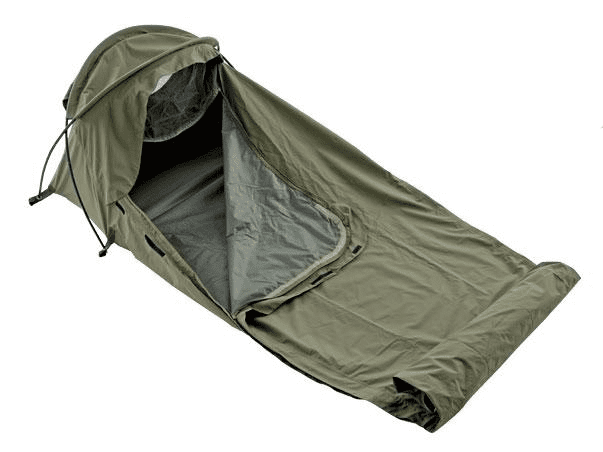 Shelter - Aside from proper clothing, you have a lot of shelter options. A tarp is super-versatile and can be used to construct all kinds of quick shelters. A lightweight tent is a more weather-resistant option, usually weighing less than 5 pounds. Sometimes a lightweight sleeping bag (also under 5 pounds) is all you need, especially if you combine it with some form of tarp. A sleeping pad under 2 pounds is not only more comfortable, but it will also keep you from losing body heat to the ground.
Shelter - Aside from proper clothing, you have a lot of shelter options. A tarp is super-versatile and can be used to construct all kinds of quick shelters. A lightweight tent is a more weather-resistant option, usually weighing less than 5 pounds. Sometimes a lightweight sleeping bag (also under 5 pounds) is all you need, especially if you combine it with some form of tarp. A sleeping pad under 2 pounds is not only more comfortable, but it will also keep you from losing body heat to the ground.- Food - Three days' worth of food is enough. Calorie-packed snacks are good on the go, just keep in mind that candy and other sugary sweets come with a crash after the rush wears off. There are a lot of survival foods and MRE's available, and they're perfect because they need little to no preparation. Avoid packing foods that require more preparation than just boiling water. Also, this is about surviving, and you'll likely have to sacrifice flavor or preferred meals over getting energy into your system.
 Water - Water is heavy; one liquid gallon is roughly 8.34 pounds. For this reason, throwing a portable water filter into your kit is a must. A canteen with an included cooking cup is ideal for durability and versatility and removes the need to bring a separate cooking pot. Since you want to avoid cross-contamination by drinking from the same container that you used to collect untreated water, bring another water container or hydration system. It's pretty common to find packs that accommodate water bladders, which are perfect because they lose weight and volume as you drink from them.
Water - Water is heavy; one liquid gallon is roughly 8.34 pounds. For this reason, throwing a portable water filter into your kit is a must. A canteen with an included cooking cup is ideal for durability and versatility and removes the need to bring a separate cooking pot. Since you want to avoid cross-contamination by drinking from the same container that you used to collect untreated water, bring another water container or hydration system. It's pretty common to find packs that accommodate water bladders, which are perfect because they lose weight and volume as you drink from them.- Clothing - Make sure you dress appropriately. If you don't usually wear outfits that are matched to the elements, keep a set in your kit. Rather than packing your sensible boots or shoes, just keep them attached to the outside of your bug-out bag by the laces. To cut weight and volume, a lot of people will only keep one outfit in their kit that includes wicking base layers, an insulating layer, and a wind/weather-resistant layer like a poncho. The only spare clothes they'll pack will be one or two pairs of non-cotton socks designed for hiking. Gloves are another must, as they'll protect your hands from blisters and injury in addition to protecting them against the cold.
Extra Considerations:
- Your Mind Should Be Your Sharpest Tool: Learn as much as you can as often as you can. Articles like this one are a great jumping-off point but couldn't hope to be entirely comprehensive. Watch TV shows, check out online videos, and read up. Take everything with a grain of salt, and use a critical eye to spot things that you just don't see as practical or realistic.
- Papers: Bring identification and other important documents like birth certificates and social security cards. Children should have current physical pictures of family members with names and contact information on the back in case of separation (not just pics on an electronic device). Cash is king. Expect that you won't be able to use credit or debit cards, cryptocurrency, or any other electronic payment system. If you have to barter, you're trading off the resources that you brought along for a reason.
- Hygiene: Basics like a toothbrush, toothpaste, and some soap will not only keep you clean, but can help lift your spirits, add a touch of normalcy, and get you feeling human again.
- A Plan: Factor for your environment, be it urban or rural. Set destinations that you've been to before and are familiar with. Make sure everyone in your party knows where you're going so that if you get separated or are starting from different places, you can rendezvous at the predetermined spot. Map out alternate routes in case your primary ones are impassable for whatever reason.
- Communication: Having communication with others in your party can be a relief if you get separated. You can also consider bringing an emergency radio that will allow you to check in on what's going on around you.
- Don't Rely On Rescue: Your mindset should be self-rescue, not being bailed out by government entities or neighbors. Sure, you can plan to head to the local emergency shelter, but don't plan on there being room for you.
- History: Research some historical situations and what worked or didn't work. Hurricane Katrina in 2005 is a prime example to learn from. Don't get laser-focused on certain scenarios like floods or civil unrest. Use a more generalized approach.
- DON'T Raid Your Camping Gear in an Emergency: This wastes time and leaves too much to be forgotten. If you intend to use existing camping gear in your bug-out kit, make putting it back into your kit the first priority when you get home from a camping trip.
Considerations When Choosing Bug-Out Bag Items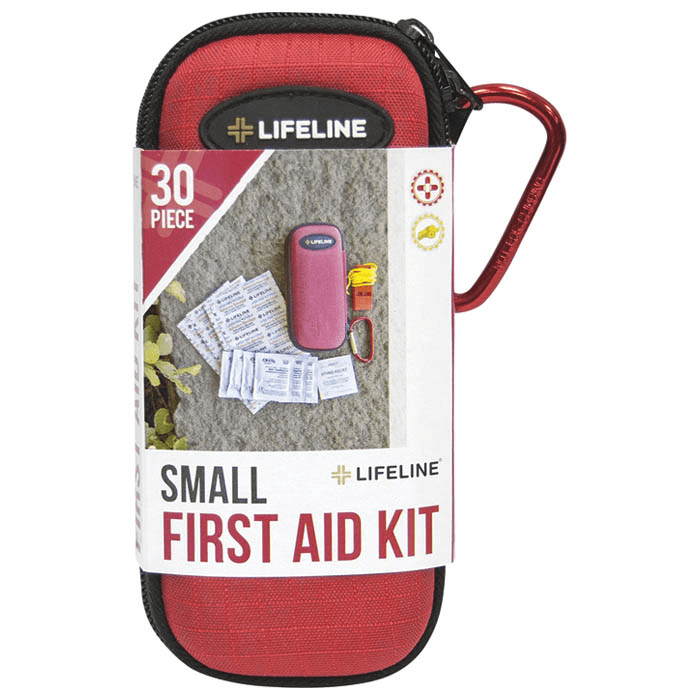
- Your Bag: It might seem obvious, but this is an area where a lot of people go astray right from the beginning. Your bug-out bag needs to be a backpack that fits your body, has a lumbar belt, and is suited to all-day carrying. You need to factor the weight of the pack itself into the overall pack weight (covered below). A bug-out bag should never be a duffle bag, garbage bag, or another improvised carrying system.
- Versatility: Carefully consider each item that goes into your emergency bug-out backpack. If at all possible, make sure that each item can serve at least two functions. Use your imagination, or line up similar items and see what can stay and what can go. Can you boil water in your hydration kit? Do you need signal flares if you have another distress signal like a whistle or a strobing light? Can containers be used for other purposes, like a dinner dish?
- Weight: Overall pack weight should be no more than 20% of your body weight if you're inactive (exercising less than 3 hours per week), and no more than 30% if you're very physically fit. Minimize weight wherever possible. Check out ultralight camping and hiking gear and lightweight backpacks. Don't think of your gear in terms of pounds; think of it in terms of ounces. The ultralight hiking crowd thinks in terms of grams, the more weight you can shave off, the better. The last thing you want to do is have to decide which piece of crucial gear you're going to ditch just to carry on. To check if your bug-out bag is overweight, simply weigh yourself, calculate the maximum weight of your kit, and add that to your body weight. Then, put your loaded pack on and get back on the scale. If you're over the limit, it's time to go back through your gear and subtract. (Note: inactive people should not have a pack exceeding 45 pounds and active people shouldn't exceed 60 pounds, even if that's below the percent of your body weight).
Here's an example: a 175-pound man who's got poor fitness shouldn't have a pack more than 20% of his weight, or 35 pounds. When he gets on the scale with his loaded pack, the needle shouldn't be over 210. If he's in great shape, he gets 30% or 52 pounds of pack weight, and the needle can climb up to 227. That's only a difference of 17 pounds, but it counts a lot when you're trekking miles over uncertain terrain.
- Volume: Even lightweight gear can sometimes be bulky, throwing off your balance and tiring you out. Use as much compression on sleeping gear and clothing as possible. Vacuum sealers are perfect for anything you can fit into them. Not only does it remove all of the air, but it makes stackable/packable units that are sealed against moisture. Remove excess packaging on food or other items and then seal them up in a vac-bag. Same goes for clothing items, first aid kits, and the like.
- Cost: We all like to save money, but cheap gear fails. If you're on a budget, get what you can and slowly replace it with better equipment as you can afford a piece here and there. You're trusting your life to this stuff, and you can't depend on being able to easily replace it once you're evacuating.
- Durability: Hand in hand with cost, your gear should be durable. Something that's flimsy or runs the possibility of failing after a few uses is not doing you any good. Test it out a few times at home, and make sure you can rely on any given piece of equipment.
- Non-Essential or Impractical Items: Do you actually need 1,000 rounds of ammo, an axe, a machete, a crockpot, and the entire library of Harry Potter books? Are you going to rappel down cliffs, build complex rope bridges, or pole vault over chasms? If you're not a combat-hardened operator, don't pack like you are. Be realistic about what you can carry and what's just dead weight. Basic hygiene is important, shaving and makeup kits are not.
- Personalized & Individualized: Modify your kit to your needs. If you take medication, make sure you have some stored separately in your go-bag. Every person in your party needs their own bag (with consideration for kids covered below in "The Family Bug-Out Bag"). Avoid breaking up essential gear like shelter between two or more people. If you get separated or someone loses their pack, you're all up the proverbial creek sans paddles.
- Distribute Weight Properly: Pack heavy items toward the top of your bag and lighter items on the bottom. If it's practical, consider lashing your sleeping bag and/or shelter to the outside of your pack. Keep necessary gear where it can be easily accessed on outside pockets. Use your shoulder straps and lumbar belt to carry the bag above your waist, and use sternum straps to keep the pack from shifting too much. If you've fitted it properly, your pack should feel like a turtle shell and pretty much a part of you.
The Family Bug-Out Bag
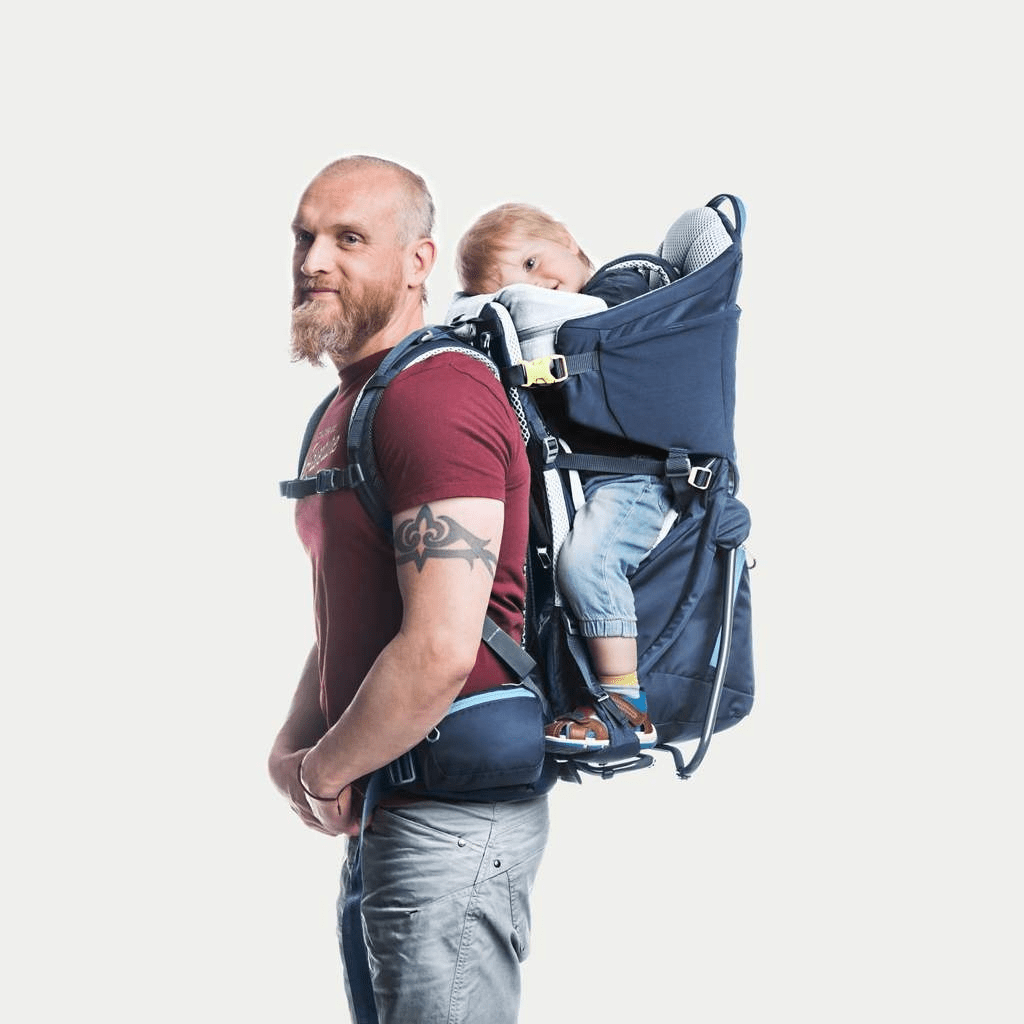 Another thing emergency preppers often overlook when doling out advice is that many people are also looking out for families, and that can bend some of the rules. If you have very little kids who aren't going to be able to hoof it out with you, then someone is going to have to pack them in a purpose-built child-carrier backpack. That means someone else is going to have to take up the slack and carry the lion's share of the bugout supplies. This doesn't mean that weight limits should be exceeded. It means that it's going to take more planning and consideration of what can be shared between two adults.
Another thing emergency preppers often overlook when doling out advice is that many people are also looking out for families, and that can bend some of the rules. If you have very little kids who aren't going to be able to hoof it out with you, then someone is going to have to pack them in a purpose-built child-carrier backpack. That means someone else is going to have to take up the slack and carry the lion's share of the bugout supplies. This doesn't mean that weight limits should be exceeded. It means that it's going to take more planning and consideration of what can be shared between two adults.
Luckily, child-carrier backpacks will have compartments for diapers, formula, binkies, and all of the other basics babies and toddlers need. You might want to consider cloth diapers and wipes, which can be cleaned and reused. Disposable diapers didn't come along until 1960, and we've been raising babies for much longer than that. There are online tutorials on how to use them, or you could just go ask grandma. If you absolutely have to go with a stroller or wagon, make sure it's robust enough to endure a long trip. You won't be meandering around the park or shopping mall, you'll be going over potentially rough terrain. If the stroller or wagon breaks down after a mile, you'll be in for the exhausting and potentially dangerous task of piggybacking or shifting them from hip to hip. You're also going to have to face the tough choice of what gear will need to be sacrificed to carry on.
You know your kids and their capabilities, but as a general rule, a 10-year-old should be able to carry their own bug-out bag and know how to use everything in it. Younger kids can carry certain elements of their kits, like snacks, water, and extra clothes, within reason. Again, this means that someone else is going to need to pick up the slack and forgo their own needs, but child-rearing is all about sacrifice.
Bug-Out Bag Testing & Trial Runs
Now for the fun part. You've got your bug-out bag, and you're ready to take on the world no matter what it throws at you. You will never be caught with your pants down. So, prove it. Randomly grab your pack, throw it on, and roam the neighborhood for a mile or so. Try it at night, in the rain, without planning it out. You'll most likely come home ready to make some adjustments to your system. If you're feeling hardcore and want to test the GOOD theory, take it to the next level and follow your map out of town to your rendezvous point.
A really fun way to test your plan and setup is to have a fellow preparedness enthusiast call you at any hour of the day or night and say, "Emergency test starts now," and hang up. That's the cue for you and anyone you're going to bugout with to leap into action and out the door by more closely replicating the real-world timing of disasters in a controlled scenario. Time it to see how long it takes to set your plan into action. It's an eye-opener and well worth any minor inconvenience or discomfort you may experience at the time. Fair is fair, so you get to call that person anytime you want and say, "Emergency test starts now," and hang up on them.
So now you're up to speed on the basics of building your bug-out bag and putting it to the test. We've covered the essentials to bring and the needless things to leave behind. From what you've learned, you can scale down your kit to an EDC or build it up to an INCH, and you know how to define both. If it's applicable, you're ready to put together a family bug-out bag and get the kids in on the plan. Let us know what you liked and what you're not sure I got right in the comments below, and best of luck to you!

